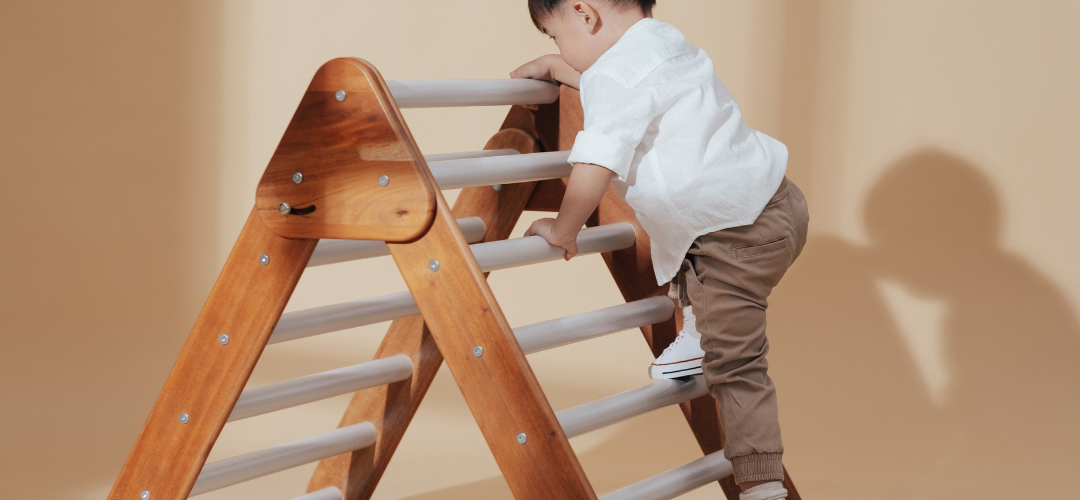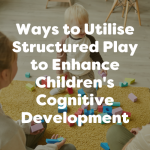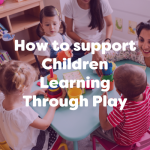This article has been written by early years consultant, Anne Rodgers, from ATR Consultancy. Anne has 36 years’ experience of working in the childcare and education sector. This includes training practitioners, managing numerous settings over the years and writing articles for Early Years Educator and the CACHE Alumni website.
Why is risky play such an important part of childhood? It is important that children are kept safe from potential harm and hazards at all times. However, they also need to explore and take risks.
Risky play allows children to challenge themselves on many levels:
- Physically – by climbing a little higher, running a little faster or jumping a little further
- Emotionally – feeling out of control or overcoming fear
- Mentally – learning how to get out of trouble, learning your own boundaries and that of the environment around them
Read below to find our more about risky play in the early years!
How to support risky play in the early years
Children need opportunities to problem solve and experiment with taking risks to challenge themselves physically and mentally. They need time to practice new skills and develop their bodies. Children need and instinctively want to be able to take risks to test their abilities and strengths. However, children do need the support to take these risks as part of their learning and development.
When creating a safe environment for children, practitioners must consider their legal duty to identify and reduce or eliminate risk. But should also take into account those risks which are acceptable too. The risk of falling off larger play equipment is quite high. However, the risk of harm is minimised by ensuring that there is adequate supervision, correct positioning of the equipment (away from windows, or walls), crash mats, no overcrowding and particular “rules” set by adults in accordance with individual children’s level of understanding. The benefits will include children being able to expand their skills, as they climb higher, reach further, or balance for longer. But also experience the consequence of taking risks beyond their current ability.
Indoor Play
When developing a setting, it is important for it to be a safe and secure place where children learn to play and gain independence skills required before they attend school. This environment should be rich in opportunities for children to learn, explore and make sense of the world around them.
Activities should be age and stage appropriate and the areas of learning clearly defined. Staff should be knowledgeable about what it is that children enjoy. As a result, they can plan for play experiences which will help children to learn and develop. Children need supervision from staff at all times, but it is important that they know when to step in and when to sit back and let the child solve issues by themselves.
Indoor play Equipment
Procedures must be in place to safeguard children at all times. This includes children being guided in how to use equipment safely and how to behave well within the setting. For example, children should not run around whilst handling scissors or sharp tools. Instead they can use them with care at the designated place set aside for them in an appropriate way.
Care should also be taken when cooking in case of allergies and intolerance’s. Child safety knives can be bought which allows children to cut fruit and vegetables whilst remaining safe. Allowing children to use appropriate utensils properly helps to further reduce any risk in this activity.
Toys and equipment need to be age and stage appropriate that offer challenges to the child. For example, younger children often like to play with toys that are meant for older children. But these may pose choking risks if they put them in their mouths. Check all toys are suitable for the needs of the children using them and remove any unsafe or broken toys.

Outdoor Play
Outdoor play is fundamental for children’s health and well-being. Practitioners need to plan effectively for children’s next steps in their learning across all 7 areas of the EYFS curriculum. Each setting is unique and may have small outside areas or large outdoor areas, grassy areas or tarmac. Careful planning will help make the most of the type of space you have. Allow children opportunities to take risks by having assault courses for them to negotiate suitable equipment to enable independence in play and space to explore and discover.
Some settings have areas for growing plants and flowers and if they are lucky, an area set aside for an allotment to grow fruits and vegetables. Staff need to be aware of poisonous plants, allergies and what is good to grow at particular times of the year. Children can use gardening equipment that is suitable for their age and stage of development. Children should be taught not to pick plants unsupervised as they may be poisonous or harmful to them.

The role of the adult
Adults need to support and encourage all children to enable them to gain in confidence and try new things. They need to be available to explore with them, talk, listen and respond to their questions. Children need to be supervised at all times indoors and outdoors, yet allowed freedom to take risks and manage their own play.
Planning for the curriculum and next steps in development will help adults to know what it is that children need to learn next. Adults need to observe how play is being managed and change areas if necessary to meet the needs and interest of the children. It is important that children have plenty of time outdoors every day and essential that the adults share in the child’s curiosities and delights. The adult needs to be tuned in to the children and their interests and teach children how to care for the resources by modelling how to tidy up. They also need to ensure that they show children a variety of ways in which to use equipment and the space they are in whether that is indoors or outside. The best resource that the children have is the practitioner who plans experiences and activities for them.
Adults also need to:
- Risk assess the areas used daily
- Ensure health and safety procedures and policies are being followed
- Make sure all children are safe and protected in all weathers
- Ensure equipment is safe and age and stage appropriate
- Join in when invited into children play
- Be enthusiastic about being outside
- Plan fun and exciting play experiences
- Make sure all children are included and can take part
- Develop activities to the needs of the child and their next steps
- Reflect on what works and what does not work and why
By being actively involved in the children’s outdoor experiences, adults have a chance to ensure the children in their care have happy, worthwhile and meaningful experiences, which will enhance their developing skills whilst having fun together. Supervision of children is key for ensuring safety, but balance this with allowing for opportunities to explore and discover independently with materials that you provide.
Links to the EYFS
EYFS (2012) Development Matters: Characteristics of Effective Learning –
Support for children to take risks and explore… Encourage children to try new activities and to judge risks for themselves… Always respect children’s efforts and ideas, so they feel safe to take a risk with a new idea.
PSED – Be aware of and alert to possible dangers, while recognising the importance of encouraging young children’s sense of exploration and risk taking.
Physical Development – Ensure children’s safety, while not unduly inhibiting their risk-taking.
Final thoughts
Risk allows children to push themselves to the limits of their capabilities and allows them space to progress. It also allows children to feel in control of their actions, learning and play; they learn boundaries in a safe, secure environment where they can be supported directly or indirectly by practitioners.






